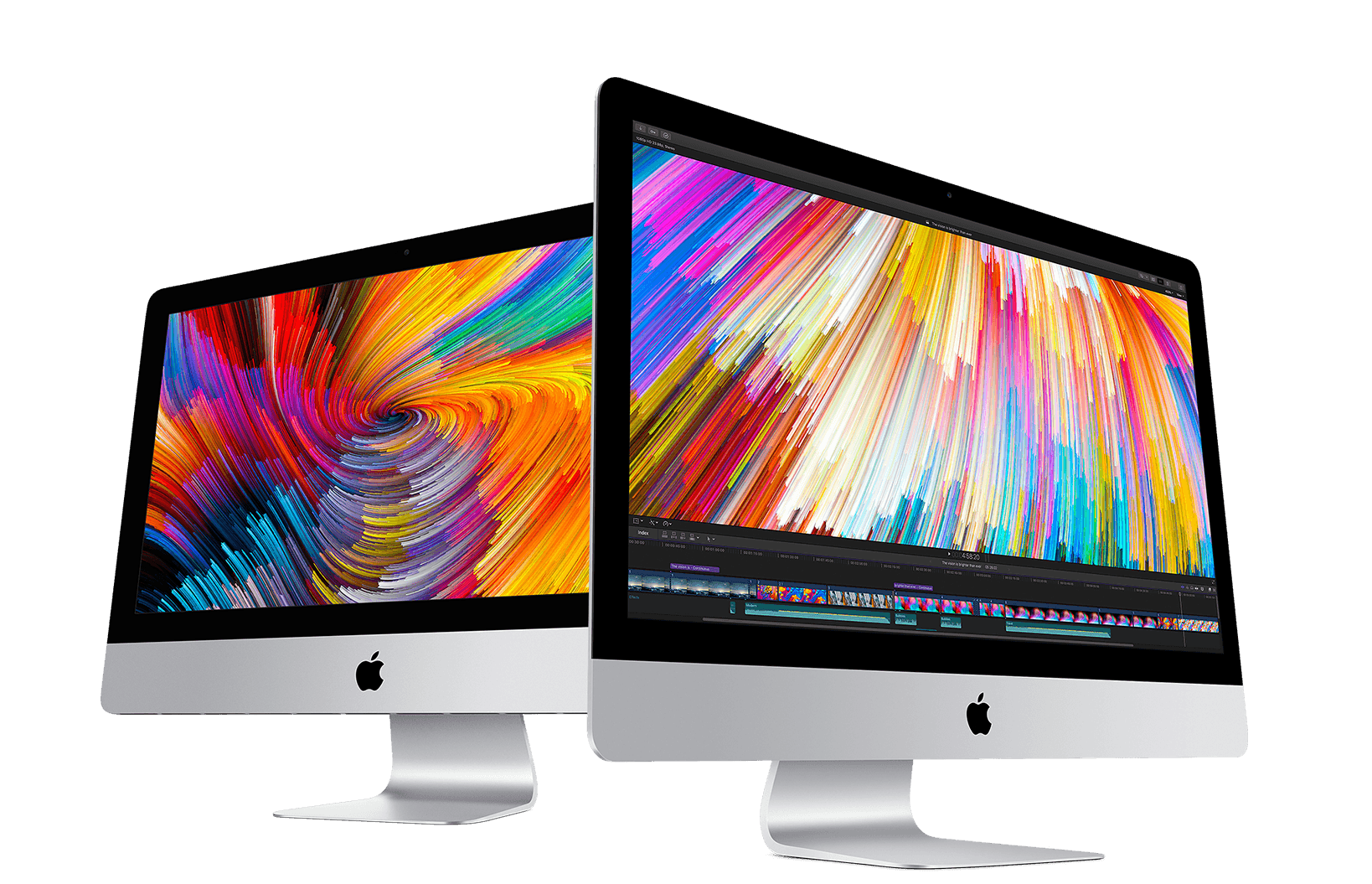Colour reproduction
Colour gamut
The GW2760HS has a colour gamut which conforms quite closely to sRGB. There is some slight under-coverage of some green shades but slight extension beyond sRGB elsewhere. The image below compares the monitor’s colour gamut (red triangle) with the sRGB colour space (green triangle). Overall this is more generous coverage than we’ve seen on many modern VA panels and helps provide a relatively vibrant but still well-represented image.

Colour in games and movies
Battlefield 3 had a nice rich and varied look, within the constraints of the intended game aesthetic. Vibrant elements such as vivid orange fires and the red, green and blue in-game markers stood out well. The cyan of the engineer’s repair tool wasn’t quite as intense in colour as it could have been but still stood out nicely.
The car paintjobs on Dirt 3 looked suitably lively and varied with a good range of deep colours and some quite impressive neon-looking shades (pinks and oranges being most noteworthy). Some of the lighter blue, green and cyan shades could have done with a touch more saturation. The racing environments looked rich and natural with good shade variety. The range of muted khaki colours and subtle golden brown tones, in fact, looked more like something you’d see on an IPS rather than VA in terms of their depth and variety. A minor criticism is that some of the deeper greens, such as those in the Finnish forest, could have done with a touch more depth. These observations seemed to fit with the colour gamut being a bit less generous in this region.
We also tested the colour reproduction on two Blu-ray film titles. First up was Skyfall. Colours were well represented, looking natural and in-place. Skin tones appeared appropriately saturated regardless of their position on the screen. Some of the vibrant oranges from flames, deep reds of dresses and a variety of neon lights were particularly pleasing in their vividness. Some deep greens could have done with a touch more saturation, however.
The second Blu-ray tested was Futurama: Into the Wild Green Yonder. Some of the bright neon colours on this movie really popped out nicely. Bright pinks and greens with dark star fields in the background were particularly impressive. Although colours didn’t have quite the same painted on ‘pop’ you might see on a glossy screen they weren’t held back by excessive graininess, either. Pastel shades were also well represented with strong variety and consistency. There was a degree of shift in a given shade (for example if a character’s skin tone fills up a lot of the screen) but this was relatively minor. As a result some subtle variations, such as different character skin tones, were not as distinct as they could be and changed slightly depending on on-screen position. Despite this, overall shade variety was excellent. Whilst not quite on par with IPS or PLS technology in this respect it was much closer to this than we’ve seen from a VA before.
Viewing angles
To explore colour consistency and viewing angle performance more closely we used Lagom’s tests specifically designed for this. We observed the following.
- The purple block was mostly purple with a pink hue towards the far left that shifted with head movement. This did not cover as much of the screen from a normal viewing position as you’d expect from a VA panel.
The red block was a fairly consistent red, appearing slightly pinker towards the bottom. The flanks appeared less pink than usual for a VA panel.
The green block appeared a slightly yellow green throughout without any significant variation.
The blue block was an unmistakable deep blue throughout.
The Lagom text appeared a blended grey with a mild green tint towards the top and a more noticeable red tint towards the bottom and sides. This tint moves if you move your head and shows that the gamma curve of the monitor is somewhat dependent on viewing angle (more so than IPS, less than TN).
The video below shows the monitor’s viewing angle performance from a variety of angles. Overall the shifts in contrast and colour from acute angles, which are most easily observed on the mixed desktop background, are less pronounced than usual for a VA panel. Performance here largely mirrors what was observed across the screen in terms of colour consistency – not quite IPS but some improvements over usual VA. The final section of the video shows the slight off-angle ‘VA glow’ as described earlier.
Features and aesthetics
At the front the monitor has a lot of glossy plastics going on – for both the stand and bezel. The bezels themselves are strikingly slender, particularly at the sides (9mm or 0.35 inches) and top (10mm or 0.39 inches). The bottom bezel is 16mm (0.63 inches) thick and features a faint green power LED with accompanying power symbol proceeded by 5 dots to mark out the position of the controls. The power LED hangs down at the bottom of the bezel and isn’t bright enough to be distracting even in a dim room. You can see from the fairly well defined outline on the picture below that this is a very light matte (‘semi glossy’) screen surface which helps retain a good level of clarity and vibrancy.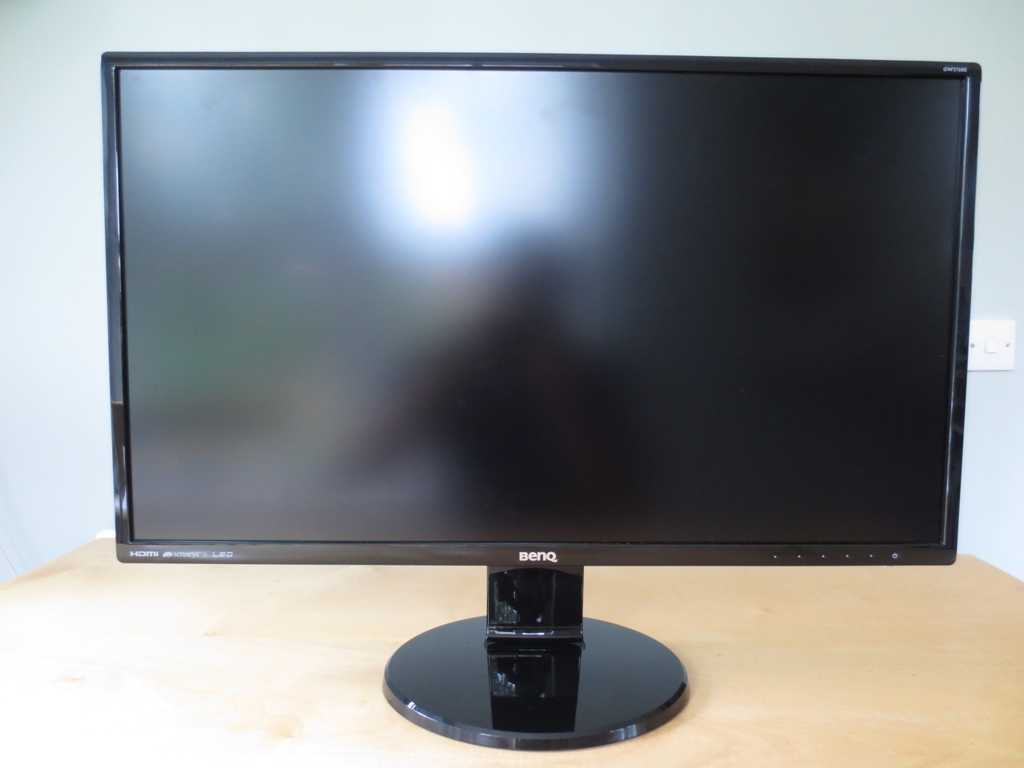
When the monitor is switched on and displaying an image, even in reasonably bright conditions, the good glare handling characteristics of this screen surface also become apparent.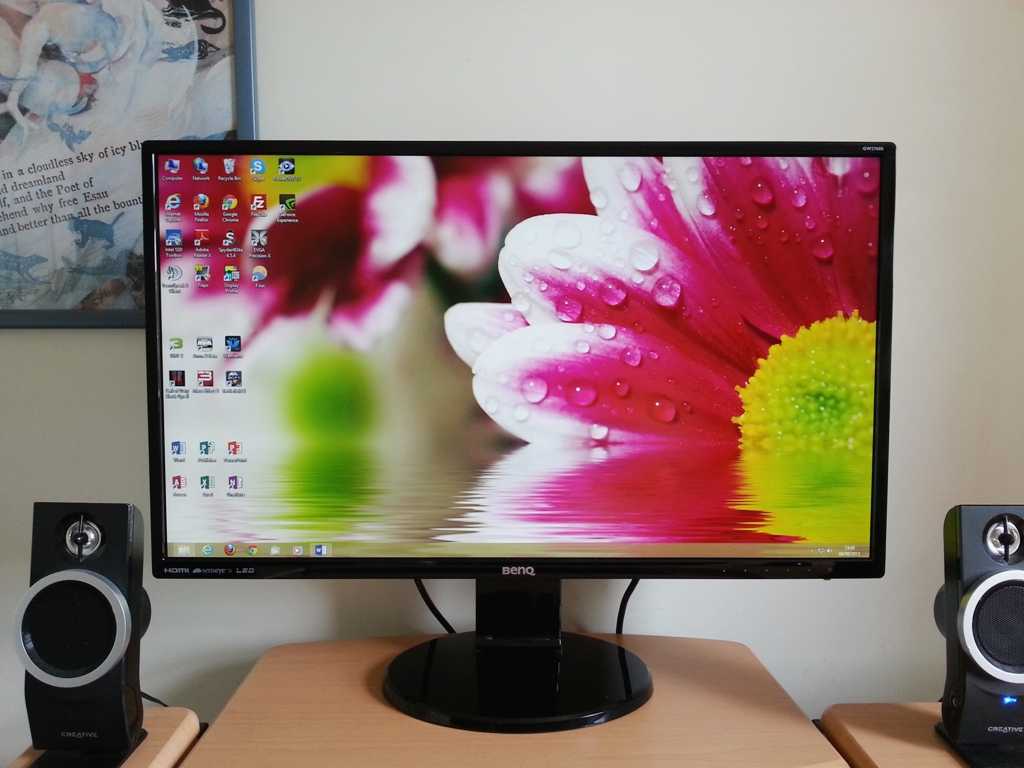
The monitor’s OSD (On Screen Display) controls and power button are located at the back of the screen in line with the marketing on the front of the bezel. Navigating through the menus was a bit awkward. The buttons themselves were responsive and gave a good audible click when pressed, but the menu was a little laggy. Before entering the main menu the buttons have the following functions; ‘Picture Mode’, ‘Input’, ‘Volume’, ‘Menu’, ‘Exit’ and ‘Power’. These are labelled on-screen once any button other than power is pressed.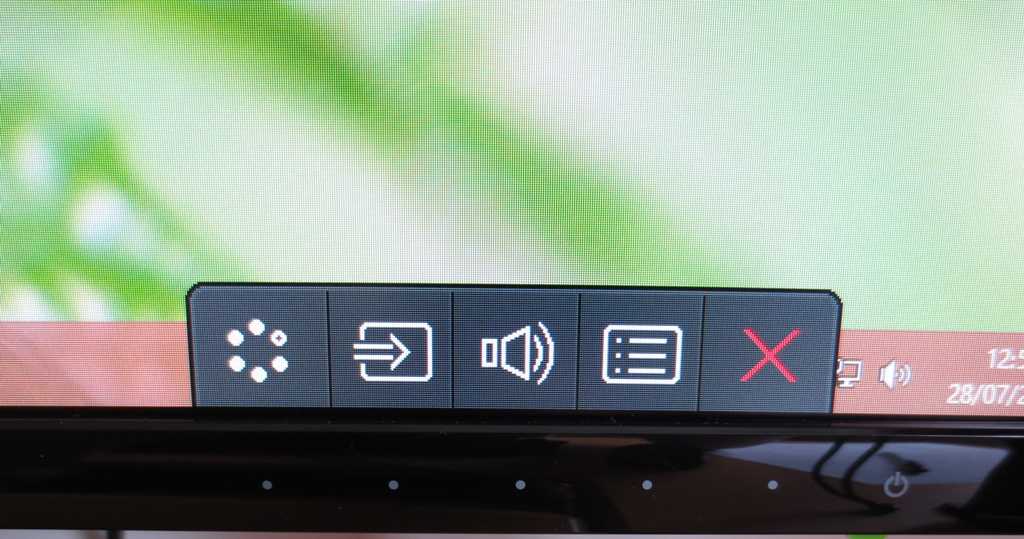
Upon entering the menu the buttons now control the menu navigation, again labelled on screen.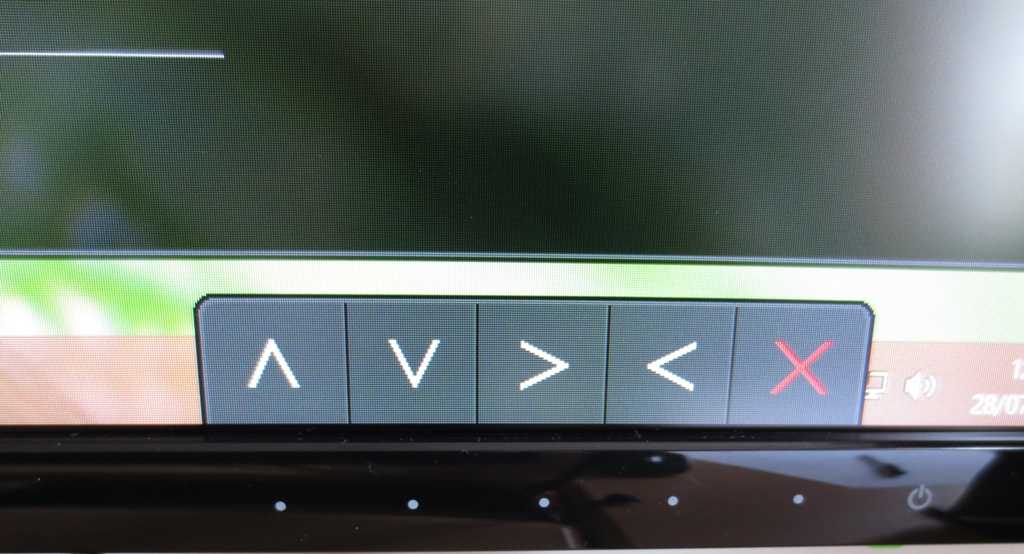
The functions change slightly when you enter deeper into the menu and need to select an option (with ‘right’ becoming ‘enter’ as marked by a blue tick). As you will notice in the image above ‘right’ is followed by ‘left’ which some people may find awkward and counter-intuitive; the reverse of what you might expect to find. This is the usual way BenQ do things but runs contrary to what most other manufacturers do.
Once you get over the awkward navigation system the menu itself has a range of useful functions. Some of these will be mentioned at various points in the review. One thing we particularly like is the ability to customise the functions of the first three buttons, before you enter the menu and they become navigational. Instead of the defaults you can assign each button to one of several functions; ‘Picture Mode’ (presets), ‘Display Mode’ (scaling for non-native resolutions), ‘Brightness’, ‘Contrast’, ‘Volume’, ‘Mute’ and ‘Input’. The video below gives a rundown of the OSD. Note that some settings are greyed out as they only apply when using a VGA connection or when using certain Senseye presets.
From the side the monitor has two definite layers. The LED backlight allows the screen itself to remain rather thin (around 16mm). There is some extra central bulk at the rear to hold the ports, internal power supply and provide space for VESA screws. 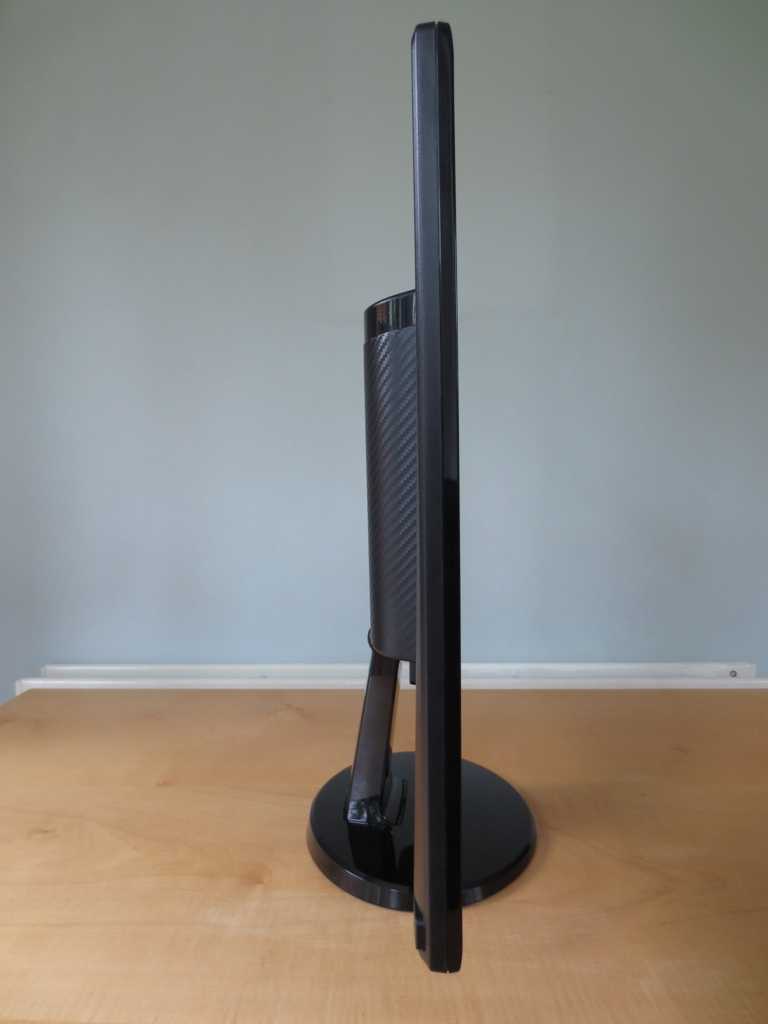
At the rear you can see some VESA holes surrounded by a zig-zag patterned matte plastic. There is a glossy black plastic strip and BenQ logo above this. There are some simple 1W stereo speakers which provide basic and fairly low quality sound output. These face upwards beneath the manufacturer logo. Aside from the logo, plastic strip and the glossy plastic stand everything else is plain matte black plastic. At the bottom left you will find the buttons and at the bottom right a Kensington lock socket. In the middle you’ll find the stand neck and quick release button to detach the stand. 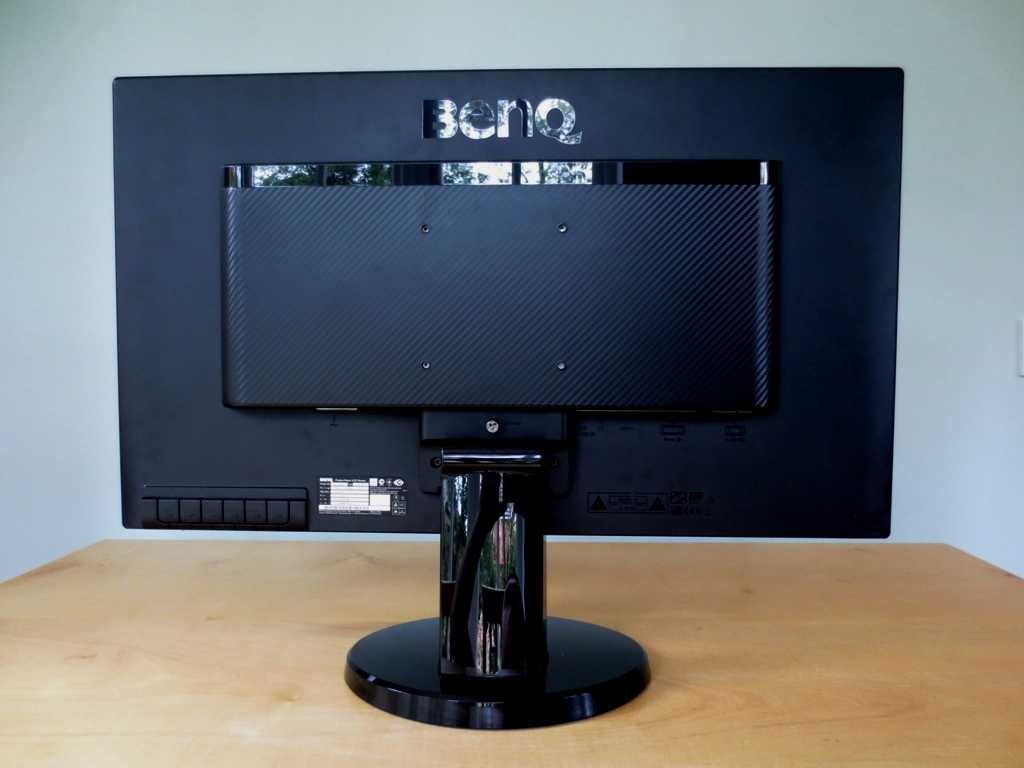
The ports are downward facing, which allows you to wall mount the monitor with minimal wall clearance. There is an AC power input to the left of the stand with the remaining ports to the right; line-in, headphone jack, HDMI, DVI-D and VGA. 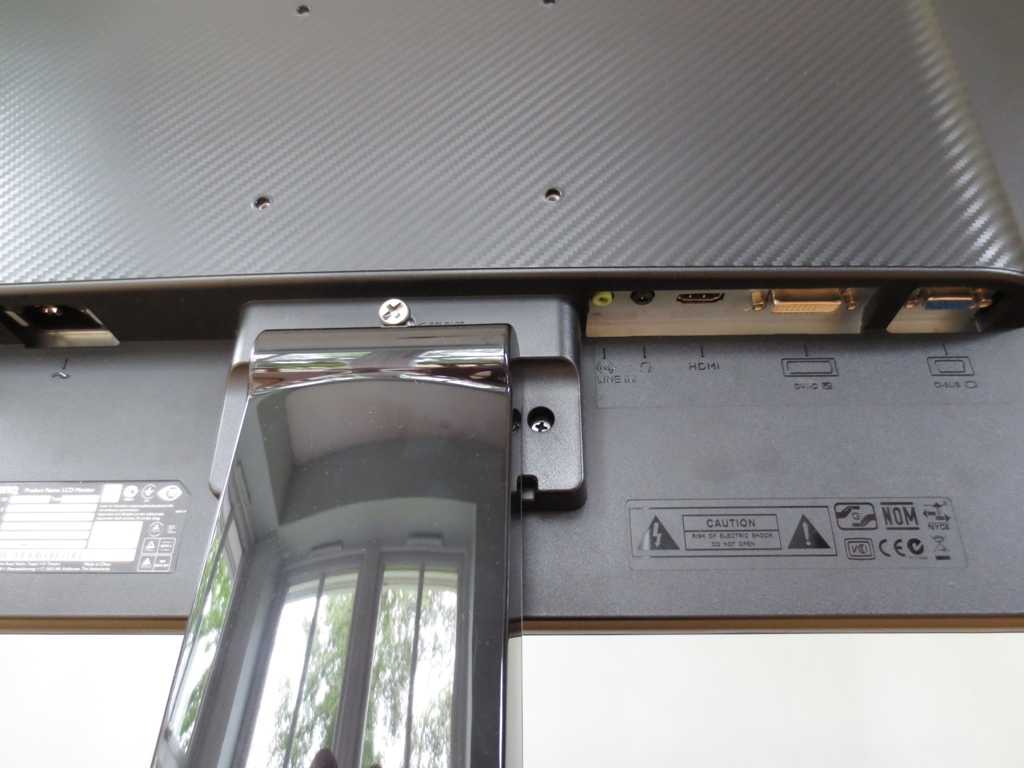
Calibration
Testing the presets
BenQ provides several ‘Senseye 3’ presets; ‘Standard’, ‘Movie’, ‘Game’, ‘Photo’, ‘sRGB’, ‘Reading’, ‘Eco’ and ‘User’. The ‘Movie’, ‘Game’ and ‘Photo’ presets over-sharpnen, oversaturate, crush shade range and present a generally rather inaccurate and frankly ugly image. They are the only presets which work with dynamic contrast, which sort of fits as it’s not something you’d enable if you cared about an accurately represented image, anyway. To put it bluntly, ‘Eco’ messes up the image in similar ways but doesn’t allow dynamic contrast to be used as this would increase brightness (an ‘eco no-no’). The brightness used by Eco mode could be lower and thus more eco-friendly – except you have no access to brightness control in this mode. So we focused on the remaining presets; ‘Standard’, ‘sRGB’, ‘Reading’ and ‘User’. There are also 5 gamma modes available in the ‘Standard’ and ‘User’ presets which were assessed. We used familiar images, the Lagom website and our test applications to subjectively scrutinise the image and a Spyder4Elite colorimeter to provide closer analysis.
Contrast and brightness
Contrast ratios
We used a KM CS-200 to measure the luminance of white and black using a variety of settings. From these readings a static contrast ratio was calculated. Aside from the aforementioned changes to correct the HDMI colour signal and alterations mentioned in the table, default settings were used. The peak white luminance, lowest black luminance and highest static contrast ratio yielded are highlighted in black and the results from our test settings in blue.
| Monitor Profile | White luminance (cd/m2) | Black luminance (cd/m2) | Contrast ratio (x:1) |
| ‘Standard’, 100% brightness | 380 | 0.11 | 3455 |
| ‘Standard’, 80% brightness | 329 | 0.09 | 3656 |
| ‘Standard’, 60% brightness | 277 | 0.08 | 3463 |
| ‘Standard’, 40% brightness | 222 | 0.06 | 3700 |
| ‘Standard’, 20% brightness | 163 | 0.05 | 3260 |
| ‘Standard’, 0% brightness | 101 | 0.03 | 3367 |
| Test settings | 179 | 0.05 | 3580 |
| ‘Standard’, Gamma 1 | 379 | 0.11 | 3445 |
| ‘Standard’, Gamma 2 | 380 | 0.11 | 3455 |
| ‘Standard’, Gamma 4 | 378 | 0.11 | 3436 |
| ‘Standard’, Gamma 5 | 378 | 0.11 | 3436 |
| ‘Movie’ | 377 | 0.11 | 3427 |
| ‘Game’ | 295 | 0.11 | 2682 |
| ‘Photo’ | 247 | 0.11 | 2245 |
| ‘sRGB’ | 247 | 0.07 | 3529 |
| ‘Reading’ | 103 | 0.05 | 2060 |
| ‘Eco’ | 135 | 0.04 | 3375 |
The BenQ GW2760HS gave an excellent contrast performance, giving an average under ‘Standard’ settings with only brightness adjusted of 3483:1. Applying different gamma modes and using the ‘Movie’, ‘sRGB’ or ‘Eco’ presets did little to upset the contrast where it comfortably exceeded the specified 3000:1. Under our test settings, where fairly minor adjustments were made, we recorded a very pleasing contrast ratio of 3580:1. Blacks were visibly deep and inky and shadow definition was good. The contrast performance was less impressive in the remaining presets, with ‘Reading’ mode giving the lowest value of 2060:1. The peak luminance recorded was an exceptionally bright 380 cd/m2 (far exceeding the specified 300 cd/m2) whilst the lowest was a moderate 101 cd/m2. This gives a pleasing luminance adjustment range of 279 cd/m2, although it would have been nice to see a lower minimum white luminance in standard mode for some users.
A Dynamic Contrast function is available in the ‘Movie, ‘Game’ and ‘Photo’ presets. This allows the brightness of the monitor to adjust itself in relation to how light (or dark) the image is overall. Its luminance adjustment range or ‘dynamicness’ can be adjusted between 1 and 5. This does not affect the reaction speed (i.e. how quickly it adjusts to changes in image brightness), though, which is always rather rapid. The backlight tends towards uncomfortably high brightness even in mixed images and it’s a shame that users are stuck to using fairly lacklustre Senseye presets. Then again it does do what it’s supposed to do and dims to an impressively low level for the darkest content. Some users may like to make use of this mode in certain circumstances and it’s there if they want it – personally we feel superior image quality with strong static contrast outweighs the potential benefits of dynamic contrast.
PWM (Pulse Width Modulation)
BenQ were very specific in their marketing of the GW2760HS as a ‘flicker free monitor’. True to their word, our testing revealed that the monitor is free from PWM (Pulse Width Modulation) flicker at any brightness. BenQ are currently making a big push towards ‘flicker free’ backlighting across their entire range of monitors as part of their ‘Eye-Care’ initiative, so expect to see more ‘PWM free’ models from them in the future. This will come as a relief to users who are sensitive to such flickering and prefer not to worry about such a thing on their monitor.
Luminance uniformity
When looking at a black screen in a darkened room, using our test settings, there was no observable backlight bleed. There was some very minor clouding at the left side of the screen and the tiniest trace at the right side as well but this was difficult to see even in a darkened room. Needless to say this is not something that would cause any bother to users in the ‘real world’. Because each individual unit is subjected to different pressures during and after manufacturing some may have more obvious uniformity issues when displaying black, others maybe less. VA panels are the best LCD technology out there for blocking light and are the least likely panel type to suffer from such issues. One factor that remains constant is something we dub ‘VA glow’, a sort of mild purple glow that is visible from decentralised angles. This can be seen in the viewing angles video featured later on in the review and unlike ‘IPS glow’ is quite mild and not observable from a normal seated position.
Introduction
VA (Vertical Alignment) panels are largely overshadowed by the increasingly popular IPS (In-Plane Switching) and IPS-like technologies (such as Samsung’s PLS). Colour consistency, accuracy and viewing angles may be pretty decent on some VA panels, but they still can’t really compete with IPS in this regard. VA panels also tend to offer slower pixel transitions than the other panel types. When it comes to contrast performance, though, VA clearly leads the way.
The BenQ GW2760HS combines a high-contrast AMVA panel with a technology called ‘Color Shift-free’. This is designed to improve viewing angles and colour consistency at different points of the screen, and in theory bring things a bit closer to IPS in that regard. In this review we’ll be putting this exciting and quite novel display through its paces on a range of games, movies and other tests and seeing if it lives up to the hype.
Specifications
The monitor uses an AU Optronics AMVA panel. The static contrast figure of 3000:1 is a little lower than the 5000:1 seen on some similar panels, possibly due to the aforementioned ‘Color Shift-free’ technology that is perhaps not entirely penalty free. A 4ms grey to grey response time is specified indicating that quite strong grey to grey acceleration (pixel overdrive) can be enforced. The asking price is typically around £215 in the UK which is very decent for a monitor of this type (especially one with some unique features). The monitor is not currently available in the United States unless imported from Europe.
The key ‘talking points’ of the specification have been highlighted in blue.
Screen size: 27 inches
Panel type: AU Optronics M270HVN02.0 AMVA (Vertical Alignment) LCD
Native resolution:1920 x 1080
Typical maximum brightness: 300 cd/m2
Colour support: 16.7 million (8-bits per subpixel without dithering)
Response time (G2G): 4ms
Refresh rate: 60Hz
Weight: 5.8kg
Contrast ratio: 3,000:1 (plus MEGA Dynamic Contrast)
Viewing angle: 178º horizontal, 178º vertical
Power consumption: 27W typical
Backlight: WLED (White Light Emitting Diode)
Typical RRP as reviewed: £215
